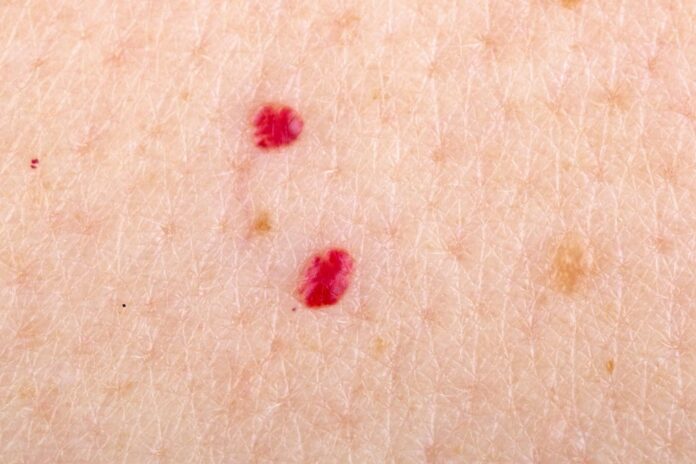If you’re anything like me, you’ll regularly check your body over for lumps, bumps, bruises and all else that’s out of place. Call me paranoid or overcautious, but I like to know what’s going on with my body, and I like to be ready to seek medical advice if I ever find something that suggests an inexplicable change. You can imagine my surprise, then, when I found a cluster of red dots on my shoulder one morning. As is so often the way these days, I immediately took to the internet to see what I could find in the way of an explanation.
And it turns out red dots on the skin aren’t all that uncommon. In fact, there’s a number of causes, so I thought it would be helpful to list them here for anyone who might find themselves in the same situation. Now, it’s important to note that red dots on the skin can come in a number of sizes, shapes and hues, and what they denote can be equally broad. Some are completely harmless; others can have potentially serious causes.
Red dots on the skin can result from various causes—some harmless, others needing medical attention.
- Petechiae & Purpura: Tiny red spots from broken capillaries. Often harmless but can signal conditions like platelet disorders.
- Cherry Angiomas: Bright red bumps from blood vessel overgrowth. Common with age and usually harmless.
- Heat Rash: Caused by trapped sweat, leading to itchy red dots—especially in hot, humid conditions.
- Allergic Reactions: Red, itchy rashes triggered by food, medications, or insect bites.
- Folliculitis: Infected hair follicles, resulting in red, pus-filled bumps.
- Cellulitis: A painful, warm skin infection that needs antibiotics.
- Impetigo: Contagious red sores common in children that ooze and form a crust.
- Vasculitis: Inflamed blood vessels causing red spots, sometimes linked to autoimmune issues.
- Hemangiomas: Birthmarks from blood vessel overgrowth—usually harmless.
When to See a Doctor:
Seek medical help if red dots are painful, spreading quickly, or accompanied by fever, fatigue, or dizziness.


